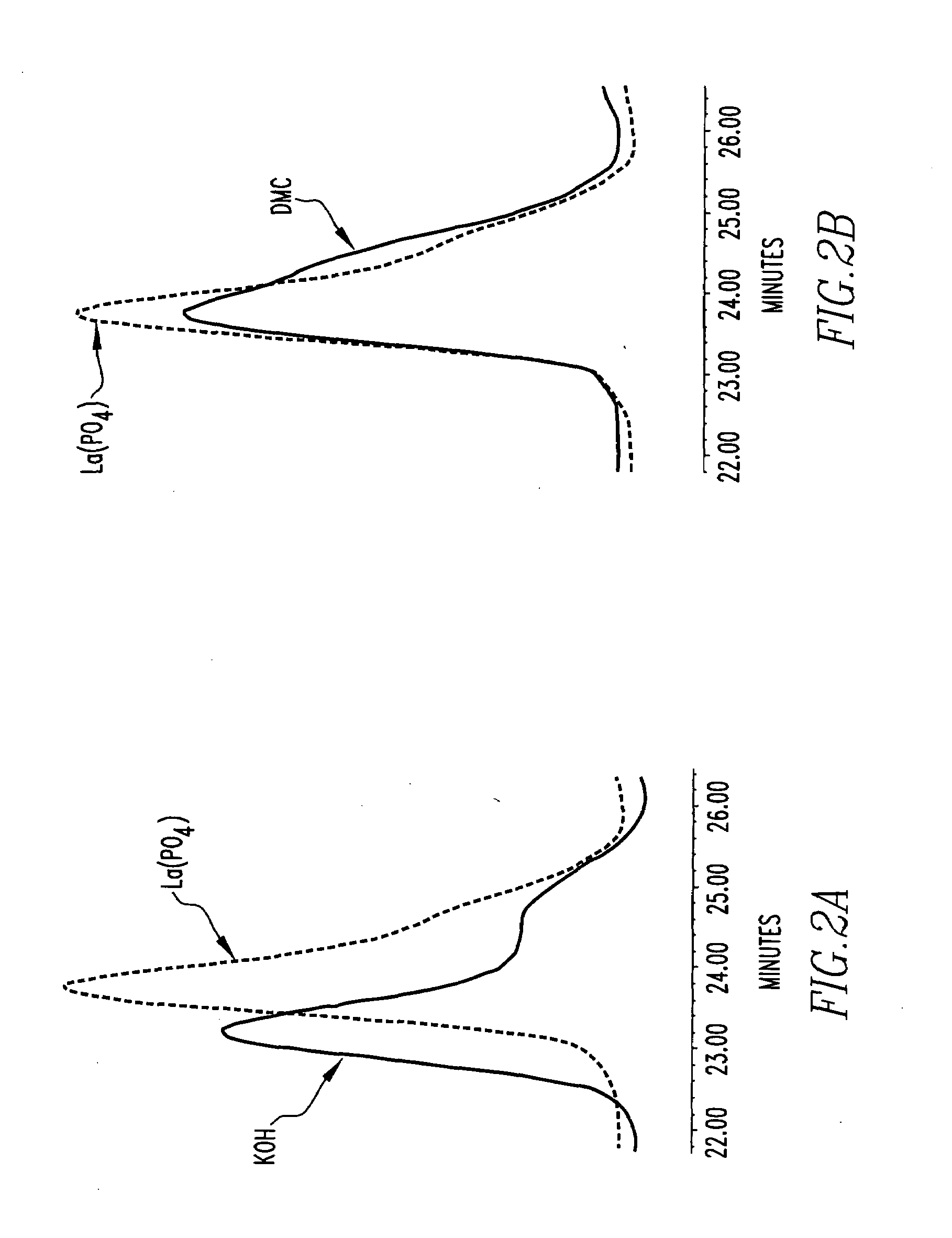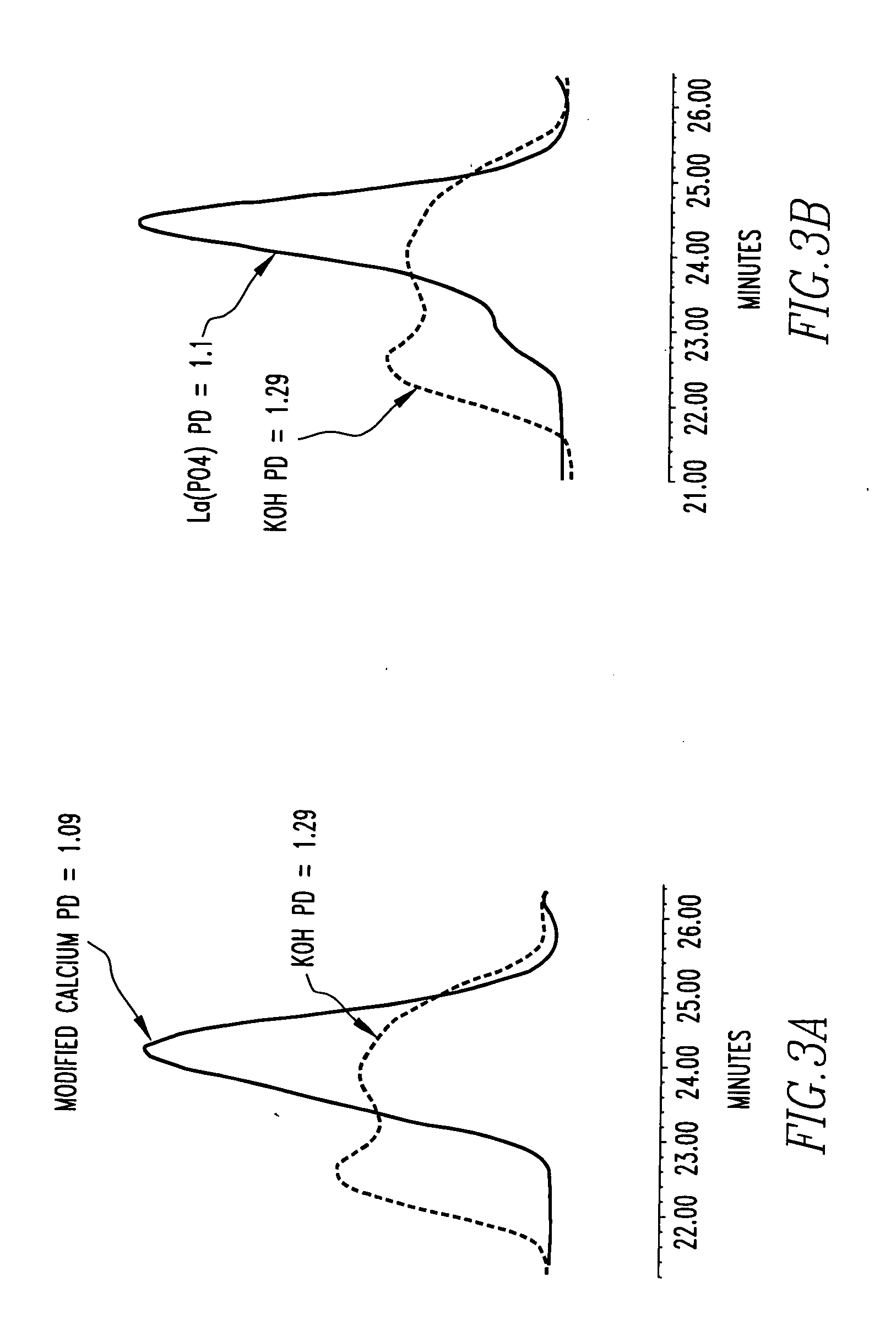High productivity alkoxylation processes
a technology of alkoxylation and high productivity, applied in the field of polymerization, can solve the problems of difficult introduction of more efficient processes and relatively slow kinetic rate of base catalysis
- Summary
- Abstract
- Description
- Claims
- Application Information
AI Technical Summary
Benefits of technology
Problems solved by technology
Method used
Image
Examples
example 1
[0050]In this example, a calcium-based catalyst was prepared with no aluminum alkoxide used in the preparation. A 250 ml three-neck flask reaction vessel was flushed with nitrogen and calcium hydroxide (9.75 g) was added along with TOMADOL 23-3 (106.2 g). The mixture was stirred at room temperature and 2-ethylhexanoic acid (2.23 g) was added by rapid drop addition of about three minutes. The contents were heated to 30° C. over a period of about one hour with stirring and with a vent open to atmosphere through the reflux condenser. The contents were maintained at 30° C. for one additional hour. Concentrated sulfuric acid (2.46 g) was added to flask at a rate of about one drop every three seconds. The contents were heated for 15 minutes at 30° C. and another 2.46 g of sulfuric acid was added at a rate of about one drop every three seconds. The reflux condenser was added to the three-neck flask and the contents heated to 110° C. over 1.5 hours. The reaction vessel was slowly heated to ...
example 2
[0051]In this example, lanthanum phosphate catalyst was prepared as described on page 31 of WO 04 / 18096 in (example B Reverse addition (LAPO)) in a 500 ml glass reactor equipped with reflux condenser, nitrogen inlet, overhead stirrer, and temperature measurement. Lanthanum carbonate (15.6 g, 0.032 moles) was charged to the flask with 100 ml of nitrogen degassed distilled water (solution was a slurry). A phosphoric acid solution was prepared by mixing 8.25 g of 85% phosphoric acid (0.071 moles) in 100 ml of nitrogen degassed distilled water. The phosphoric acid was added to the carbonate solution over a 30-minute period at a temperature of 25° C. The solution was heated to 100° C. for two and one-half hours. The product was cooled to room temperature and the solids filtered.
[0052]The solids were transferred to a glass vessel and 250 ml of nitrogen degassed distilled water were added at 50° C. for 30 minutes with rapid stirring.
[0053]The product was cooled to about 25° C. and filtered...
example 3
[0054]This example evaluated a modified calcium catalyst with a catch-up kinetics test. Nonylphenol 9.5 EO semibatch (200 g), NEODOL 25 (200 g) and the catalyst mixture DMC-catalyzed C13 3EO in catalyst prepared in Example 1 (14 g) were charged to a reactor and heated to 100° C. The mixture was stripped for 30 minutes at 100° C., heated to 150-160° C. and a nitrogen blanket added to 30 psia. Ethylene oxide (286 g, 6.5 moles) was added over a two to four hour period.
[0055]The total pressure (ethylene oxide and nitrogen) was kept to less than about 60 psia. The mixture was digested at 150-160° C. until a constant baseline was achieved and digestion was continued for an additional 30 minutes. The mixture was cooled to 130° C., stripped for 20 minutes and cooled to discharge temperature.
PUM
| Property | Measurement | Unit |
|---|---|---|
| equivalent weight | aaaaa | aaaaa |
| molecular weight | aaaaa | aaaaa |
| molecular weight | aaaaa | aaaaa |
Abstract
Description
Claims
Application Information
 Login to View More
Login to View More - R&D
- Intellectual Property
- Life Sciences
- Materials
- Tech Scout
- Unparalleled Data Quality
- Higher Quality Content
- 60% Fewer Hallucinations
Browse by: Latest US Patents, China's latest patents, Technical Efficacy Thesaurus, Application Domain, Technology Topic, Popular Technical Reports.
© 2025 PatSnap. All rights reserved.Legal|Privacy policy|Modern Slavery Act Transparency Statement|Sitemap|About US| Contact US: help@patsnap.com



